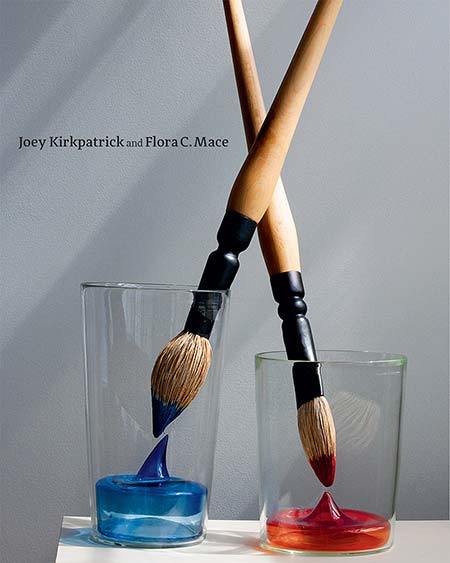Joey Kirkpatrick and Flora C. Mace
Essays by Mark Doty, Daniel J. Hinkley, Patricia Kirkpatrick, and Linda Tesner
Marquand Books, 216 pages. $39.56 (via Amazon).
The decades-long artistic collaboration between artists and partners Joey Kirkpatrick and Flora C. Mace comes to life in a 216-page book that includes over 100 high-quality photographs of mixed-media work, as well as a lengthy essay by Linda Tesner, the director of the Ronna and Eric Hoffman Gallery of Contemporary Art at Lewis & Clark College. There is no shortage of chronological or technical detail in these pages, though one longs for a stronger analysis of what unites the pair’s varied bodies of work which range from figurative drawings on glass vessels to abstract assemblages.
Nature, of course, is invoked throughout, as the pair have explored the organic form since their earliest works on glass. Kirkpatrick and Mace met at Pilchuck Glass School, when Kirkpatrick, an accomplished artist but a newcomer to glass, was told by Dale Chihuly to “go see Flora,” to figure out how to best translate her line drawings into glass. Solving the problem by using bent wire embedded in glass, the two became partners in life and art. They both cite another prominent Pilchuck figure as inspiration – Italo Scanga – the Italian multi-media artist known for embracing everyday objects and experiences as materials for his art.
Poet (and sibling) Patricia Kirkpatrick elicits a compelling series of thoughts and stories from the artists in her interviews, allowing the reader an intimate vantage point into their lives and minds. But outside of the artists’ own mouths, there is little to help readers understand the meanings within and throughout their oeuvre.
While poet Mark Doty’s introductory essay offers a hint of interpretation, readers searching for a more rigorous analysis and exploration of the duo’s art and its relationship to contemporary art will need to look elsewhere. Or better yet, using the information of Tesner’s history and the ideas of Kirkpatrick’s interview, readers might rather go off and perform their own analyses; the plentiful color plates spanning 38 years presents works from all of the couple’s phases — from their early experiments with wire-drawings on glass, to their life-sized anthropomorphic figures made of chiseled wood and blown glass, and through to their recent “Botanicals” series, where deracinated flowers are reconstructed in glass to appear frozen in time. All are captured in full-page photographs, with spreads and detail-shots peppered throughout.
Kirkpatrick and Mace continually harness a number of motifs which develop over the course of their career. GLASS contributing editor Victoria Josslin, in her feature article in the Spring 2014 edition of the magazine (GLASS #134) summarizes the duo’s work in two questions: “Working together, how can they unite two-dimensional and three-dimensional art? And how do we humans best live in the natural world — where is our place?”
The book is available for purchase via Amazon.




